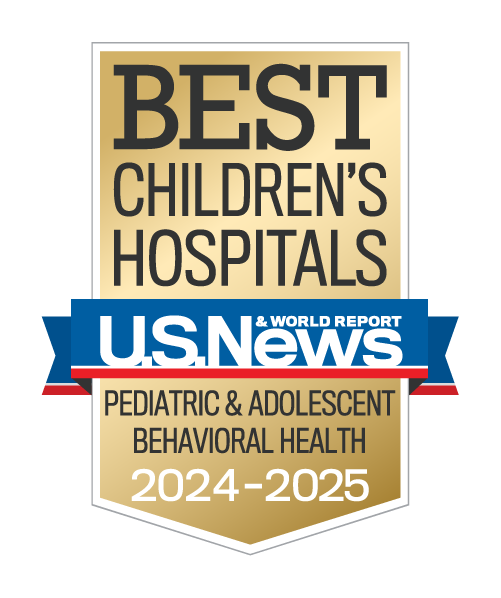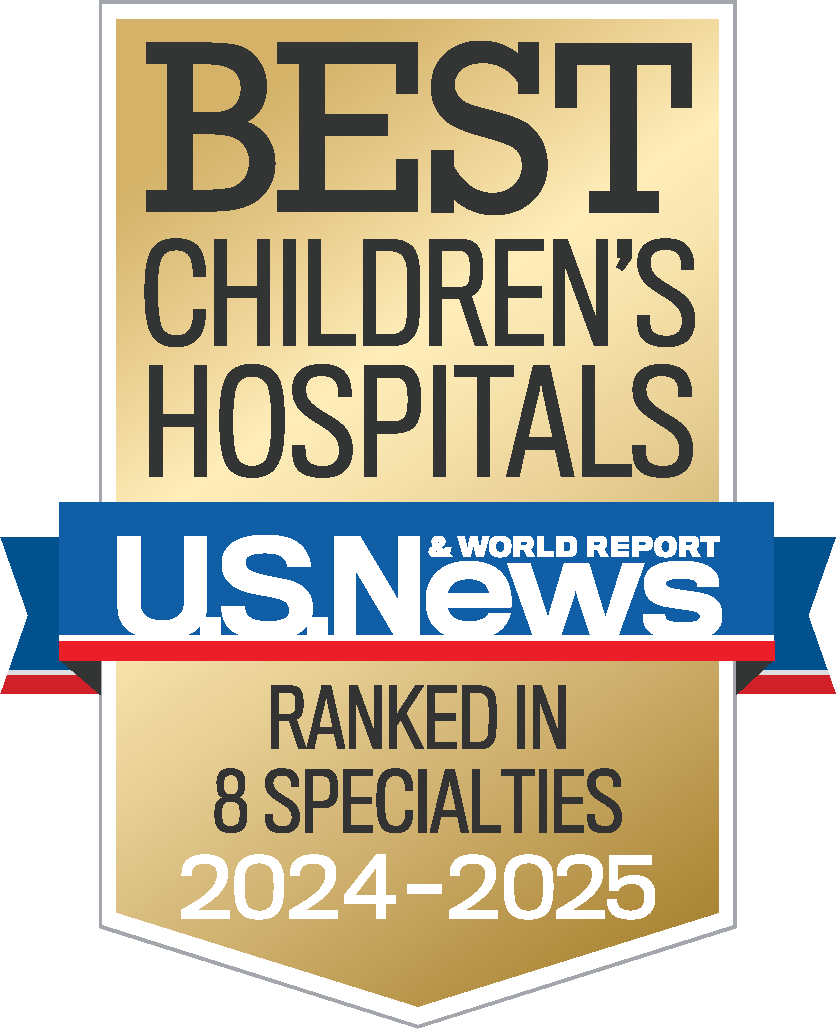The month of April is recognized as World Autism Month — a month to emphasize the awareness and acceptance of the millions of people who have been diagnosed with autism spectrum disorder (ASD). According to the CDC, in 2020, one in 36 8-year-olds had were identified as having ASD. Because of this, it has never been more important to educate families on how to help their autistic children reach their full potential.
Here, Dr. Mary Jane Pionk, a physician at the Thompson Autism and Neurodevelopmental Center at CHOC wants to help parents look for signs that their child might have autism spectrum disorder (ASD) and how they can help.
What is autism spectrum disorder (ASD) and what causes it?
Autism spectrum disorder (ASD) is a brain disorder that starts early in life. It affects social communication and interaction and is accompanied by repeating and narrow patterns of behavior or interests.
The causes of autism are not yet fully understood, but scientists believe that genes and environmental factors are involved. Researchers do know that ASD is not caused by what a parent does to raise a child. Signs of autism are usually recognizable by 2 or 3 years of age and treatment for autism is based on individual needs and may include behavioral, educational, speech and occupational therapies.
Vaccines do not cause autism.
What are the signs and symptoms of autism spectrum disorder (ASD)?
No two kids with ASD have the same signs and symptoms. Many things can play a role, such as language delays, thinking and learning problems and behavioral challenges. For this reason, autism is described as a “spectrum.”
Children with ASD often have problems with:
- Body language and eye contact.
- Social interactions.
- Building and maintaining relationships.
- Sensory input.
- Rigid behavior.
- Intense and unusual interests.
In toddlers, parents might notice the following behaviors from their child:
- Delayed speech.
- Using only a few gestures (waving, clapping, pointing).
- Not responding when someone calls their name.
- Avoiding eye contact.
- Not sharing enjoyment or interests with others.
- Unusual ways of moving the hands, fingers, or whole body.
- Being very focused or attached to unusual objects.
- Little to no imitating of others or pretending.
- Unusual sensory interests.
- Rituals such as repeating things over and over or lining up objects.
Milder symptoms may not be recognized until a child is older and has problems with:
- Forming friendships.
- Pretend play.
- Knowing how to act in different social situations.
- Unusual, intense interests in specific topics or activities.
How is autism spectrum disorder (ASD) diagnosed in a child?
No single medical test can diagnose ASD. Healthcare providers use certain guidelines to help diagnose ASD in children before age 2. The guidelines can help diagnose the disorder early. Children diagnosed with ASD early can be treated right away.
The guidelines say that all children should be screened for ASD and other development disorders before age 2. The screening is done at well-child checkups. Children who have symptoms of development or behavior disorders will need to get more testing for ASD.
Healthcare providers look for the following problems during well-child visits before age 2:
- No babbling, pointing or gesturing by age of 12 months.
- No single words were spoken by age of 16 months.
- No two-word phrases by age 24 months, just repeating words or sounds of others.
- Loss of any language or social skills at any age.
- No eye contact at 3 to 4 months.
If a child has any of the above problems, the healthcare provider will do more screening. This will help to identify if your child needs to be further evaluated by a specialist for ASD or other neurodevelopmental disorders. Additional testing may include:
- Developmental assessments/testing
- Nervous system exam.
- Imaging tests such as MRI
- Genetic tests to look for gene problems that cause ASD or other developmental disorders.
Can a child outgrow autism? A CHOC physician weighs in.
How can parents help their children with autism?
The earlier treatment for kids with ASD starts, the better. Depending on a child’s needs, treatment may include behavior therapy, speech therapy, occupational therapy, medicine and extra help with learning. The goal is to help kids:
- Communicate better.
- Play with others and learn social skills.
- Lessen repetitive or maladaptive behaviors.
- Improve learning.
- Be safe and take care of their bodies.
Children with ASD may have different needs depending on their age. The following checklists can be used by parents when caring for their children at different ages and developmental stages.
How to help your child, aged birth to 5 years, with autism
Following an ASD diagnosis for your baby, toddler or preschooler, use the following steps to ensure your child’s care:
1. Learn about your child’s needs.
Kids with autism might have language delays or trouble communicating with others. They may have unusual or repetitive behaviors or trouble with learning. However, no two kids with autism are alike — and, as the parent, you’re the expert on your child.
So, when talking to doctors or therapists, ask lots of questions. Tell them your concerns. If you’re not happy with the answers, consider getting a second opinion.
Some kids with autism may have other conditions like seizures, gastrointestinal problems and trouble sleeping. If you have any health concerns, tell your doctor. Your child may need to see a specialist and have tests.
When you feel comfortable with your child’s autism diagnosis, learn about treatment options that may include therapy and education services.
2. Learn about education services.
By federal law, kids younger than 3 who have special needs are entitled to extra support to help them reach developmental milestones, like talking. These services are called early intervention and are offered through an individualized family service plan (IFSP).
In early intervention, children learn with the help of therapists at home, at daycare, or at another facility. Parents and caregivers learn how to help improve their child’s language and communication.
Kids with autism age 3 or older may get an individualized education program (IEP) from their local school district. This plan will outline the need for things like speech therapy, occupational therapy (OT) or a classroom aide to help with positive behavior choices. To learn more, call your school district’s office of special education.
Children who do not qualify for an IEP may be able to get educational assistance through a 504 education plan, which provides support in a regular classroom to help with learning.
Each state runs its own early intervention program. Here in Orange County, you can ask your pediatrician for a referral or contact Early Intervention Services/Regional Center of OC (714-796-5354 or intake@rocdd.com). You can also visit the Early Childhood Technical Assistance Center directory for state-specific contact info.
Learn how to be an active participant at your child’s IEP team meeting.
3. Find out about health coverage.
Therapy to help with the symptoms of autism can help kids thrive, but not all are covered by insurance. Coverage depends on your state — and it’s not always easy to figure out.
Here are ways to learn what is covered:
- Call your health insurance company to find out what services they will pay for.
- Talk to a social worker on your care team to learn about special programs available to your child.
- Search online for tools that take the guesswork out of health coverage. Some national autism organizations provide helpful quizzes and other tools to learn what’s covered in your state or health care plan.
If you don’t have insurance, your state’s CHIP (Children’s Health Insurance Program) or Medicaid programs may offer coverage to your child. Medicaid also may be able to offer extra coverage if your health insurance doesn’t cover all expenses. Coverage is based on your child’s disability and need, not on your family’s income.
4. Find childcare if you need it.
By law, childcare providers cannot discriminate against children with special needs. However, you do want to be sure that the daycare center or childcare provider you choose has the skills and setting necessary to safely accommodate your child. State agencies that handle early intervention usually can provide referrals to appropriate childcare providers.
5. Join social groups or schedule playdates.
As your child grows, find chances to socialize with peers and practice the skills learned in therapy. Parents of toddlers or preschoolers may consider joining a “Mommy and Me” class or schedule neighborhood playdates. These meetups can be a valuable learning opportunity for your child.
If possible, sign your child up for social skills training classes. These are specifically for kids who need extra help interacting with others. Kids learn about things like making eye contact, taking turns and sharing. Most classes are led by a therapist or social worker, and might be covered by insurance or offered as part of IEP.
And don’t forget about social opportunities for yourself or your other kids. Many areas have support groups for parents or siblings of kids with autism. Being around others who are going through similar challenges can help you learn new ways of coping.
How to help your child, aged 6 to 12 years, with autism
When your child is ready for school, expect exciting new opportunities and challenges. The right education plan can help your child reach his or her full potential. But school is not just about learning. Just like his or her peers, your child is navigating friendships and social situations.
Follow these steps to help your child succeed during the elementary school years.
1. Get support at school.
When they turn 3, they’re eligible for additional services at their local school district with the help of an individualized education program (IEP).
Not all kids with autism need an IEP. Those who do not qualify for an IEP can get educational assistance through a 504 education plan, which provides for accommodations in a regular classroom that improve a child’s learning experience.
2. Technology may help.
Studies show that technology may be able to help kids with autism improve verbal skills, social skills and behavior, but more research is needed.
Ask your child’s doctor or speech or behavioral therapist if they think apps or other media can help your child. Many games help to reinforce the skills that kids are already learning in the classroom or during therapy sessions. Some devices (called “assistive devices”) can even vocalize kids’ thoughts if they have trouble speaking.
Learn about the app that CHOC developed to help kids with autism.
3. Plan playdates and social time.
It’s important for kids with autism to socialize with their peers, even if sometimes it can be challenging for them. Playdates and other activities are some much-needed chances to practice social skills and make new friends. Those who are struggling can sign up for a social skills group, which helps with things like introducing yourself, talking to others, reading social cues and more.
When helping your child choose a playmate, look for someone who shares the same interests. Pre-plan the activities (like going to a park, playground or another activity you know your child will enjoy), and avoid places with too much noise and stimulation if you think it will overwhelm your child. Let your child know what to expect ahead of time.
4. Get your child moving.
Physical activity is great for kids with autism — it can help improve their fitness, coordination, strength and body awareness. Regular physical activity can help prevent childhood obesity. Exercise may also help decrease repetitive, self-stimulating behaviors and improve attention.
Some kids with ASD may develop difficult eating habits. Use these tips from a CHOC dietitian to help your child have a healthy diet in addition to exercise.
5. Address emotional needs.
At times your child may feel left out, left behind, or bullied. Kids with autism sometimes have trouble relating to others, and this can make them feel angry or sad.
Get help from a professional counselor if your child shows signs of depression, which include sadness, moodiness, or keeping to himself or herself. Signs of bullying include:
- Not wanting to go to school.
- Decreased appetite.
- Trouble sleeping.
- Unexplained crying.
If your child is being teased or bullied, speak with school administrators as soon as possible. At home, talk with your child about the experience and use role-play to discuss how to handle bullies and report problems to teachers, guidance counselors or other trusted adults.
Get tips for having an open conversation with your child about bullying.
6. Prepare for puberty.
As puberty approaches, your child will be dealing with new emotions that are a normal part of growing up. Talk with your doctor about what to expect as your child matures and how to handle it. Reassure your child that the changes that come with puberty are normal.
Teach your child the difference between public and private places when it comes to private behaviors like getting dressed or touching private parts. When girls get their periods, they will need to learn how to change pads, while boys might need reassurance that wet dreams are normal.
Talk to your child about appropriate versus inappropriate touching, explaining that he or she should immediately tell you if someone crosses the line.
7. Find support.
Dealing with the day-to-day challenges of parenting a child with autism can be overwhelming. Having a strong support network can help you power through even the most challenging days.
To connect with other parents who understand your situation, find a local support group or get involved with a local chapter of a national autism awareness group. If a local group isn’t available, look for online support.
How to help teens and young adults with autism
When your child becomes a teenager, you’ll need to start planning for his or her future after high school. Where will your child live as an adult? Is college or vocational school an option? What about employment?
It’s a lot to consider, but transition planning can help. With some careful thought and help from your child’s school, doctors, and your state’s government agencies, you can make the move to adulthood as smooth as possible for you and your child.
Here are some steps to consider.
1. Start the transition plan.
Some schools start planning for a teen’s future at age 13 or 14; by federal law, a transition individualized education program (IEP) must be started by age 16. The transition IEP addresses whether a teen is able to:
- Remain in high school until the end of the year that he or she turns 21. This extra time can allow your child to complete graduation requirements, or attend vocational rehabilitation to learn job skills and try jobs of interest. Students also may focus on developing independent living skills, including how to get around on public transportation and handle money.
- Complete the requirements for a high school diploma. If your teen is not on the diploma track, what will it take for him or her to earn a certificate of completion or attendance?
- Go to college or trade school, and if so, how to get there.
If higher education is not a good fit, maybe:
- Employment with or without support from a job coach; or
- a day program, in which your teen engages in the arts and other activities.
The IEP team will talk with you and your teen about goals for the future.
The transition IEP also addresses where your teen will live in adulthood. If independent living, supervised living or a group home are options, the IEP may outline what supports need to be in place to make this possible. This could include instruction on the basics of navigating the world alone, such as how to take a public bus, or lessons on how to manage money and plan healthy meals.
2. Register your teen.
Your state’s developmental disabilities agency may be able to connect you with programs and services that benefit your teen. For your teen to be eligible, you must register him or her with the state’s developmental disabilities agency. Waiting lists for certain programs, such as group home placement, can be as long as 10 years, so register as early as possible.
To learn more about the benefits available to your teen and how to apply for assistance, visit the U.S. government’s Benefit Finder.
3. Explore education after high school.
If your teen is interested in pursuing higher education or job training, but you’re not sure what would be a good fit, look into what’s available. There are many paths that people can take, including:
- Traditional four-year colleges. Colleges and universities should have an office of disabilities services, which can connect your teen with services and programs that can help. For example, some schools offer support programs, peer mentoring and flexible schedules to accommodate your teen’s pace of learning. Online degree programs may be beneficial for students who learn better outside a classroom setting.
- Community and two-year colleges. Some community colleges have special programs for adults with developmental disabilities. See if there’s one in your area.
- Vocational or technical/trade schools that give teens hands-on training in a variety of trades.
- Adult education that teaches life skills, such as cooking, cleaning, job training and financial literacy. If your son or daughter didn’t have these classes in high school, they may be offered through your local community college.
When deciding what’s best for your teen, sit down together and talk about interests and abilities. If you need help deciding what sort of real-world job skills your teen has, consider talking to a vocational counselor. A vocational counselor can help identify skills that employers need.
4. Do the legal work.
When kids turn 18, no matter what their abilities, they’re considered adults in the eyes of the law. If your teen cannot make decisions about medical or financial affairs, consider securing a power of attorney. This will let you continue to make medical or financial decisions on your teen’s behalf.
Also, look into health insurance options. For now, adult children can remain on a parent’s private health insurance until age 26. After that age, a young adult may qualify for health coverage through Medicaid. Your teen also may qualify for Social Security and Supplemental Security Income (SSI), so find out how to ensure that he or she gets all the benefits to which he or she is entitled.
5. Address issues of sexuality.
Your teen’s body is maturing. This means that he or she might want to have a romantic relationship that may include sex. If your teen is able, have him or her talk to the doctor about protection from unwanted pregnancy and sexually transmitted diseases (STDs).
Unfortunately, people with disabilities are more likely to be victims of sexual assault. So, it’s important to talk with your teen about appropriate versus inappropriate touch and sexual behavior. Let your teen know to come to you if he or she ever feels uncomfortable, or if someone touches your teen in an inappropriate way.
6. Find new doctors.
This may be difficult if you have relied on the same team of pediatricians, specialists and therapists for your child’s entire life. But most child-focused health care providers will require that your teen transition to adult care by age 21.
Talk with the current care providers for referrals to others who can care for your teen in adulthood. Also, friends, support groups or national autism awareness groups might be able to recommend providers.
Get more expert health advice delivered to your inbox monthly by subscribing to the KidsHealth newsletter here.

Learn more about the Thompson Autism and Neurodevelopmental Center at CHOC
CHOC Hospital was named one of the nation’s best children’s hospitals by U.S. News & World Report in its 2024-25 Best Children’s Hospitals rankings and ranked in the behavioral health specialty.





